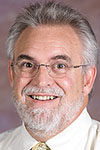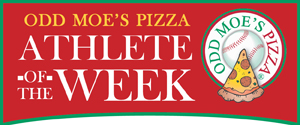Jeb Bladine: It’s never too late to correct a factual error
Consider this column a much-belated correction impacting a current story that is generating local controversy. That story is the city of McMinnville’s prolonged plan to flip the former Ultimate RB plant into a major multi-use Alpine District development — for more on that, see today’s news story.
First, as background, the Society of Professional Journalists Code of Ethics is unequivocal about correcting published errors: “Acknowledge mistakes and correct them promptly and prominently. Explain corrections and clarification carefully and clearly.” All other journalism codes make similar demands.
Well, six years ago we reported that McMinnville’s urban renewal district, created in 2013, would last “up to 25 years,” with tax increment financing continuing that long to finance UR projects. Three years ago, we reported that Oregon urban renewal districts have both fixed debt limits and fixed timelines.
Neither of those errors was brought to our attention, and life went on.
However, as suddenly became important in the Ultimate RB plant story, the life of McMinnville’s URD is an “estimated 25 years,” not “up to 25 years” as reported years ago. It is possible to establish a fixed timeline for an urban renewal district, but McMinnville did not do that.
The McMinnville UR plan came with clear expectations of completion by 2038, backed up by prominent charts showing anticipated financing models. But other language in the plan clearly qualified the timeline as estimated.
Here’s why that’s important:
The current Alpine District development proposal being considered by the city, if built, would produce a significant boost in future tax increment revenues to finance UR projects. It would not serve the city’s interests if those revenues were cut short by a 25-year time limit on the district and its financing plans. Those tax increment revenues would be needed to complete financing of $30 million in UR projects, whatever they may be.
All of this begs the question of whether a complex that combines housing, low-income housing and an upscale boutique hotel is an economic winner at that location next to the train tracks. Also, the currently favored project developer has proposed free transfer of the RB Rubber property, plus many other city financial supports, in exchange for undertaking the major investment project.
All of that could be part of closed-door negotiations over months to come, then pop back up for public consideration. Meanwhile, the URD continues paying about $20,000 in monthly interest on the temporary loan taken from McMinnville’s Wastewater Fund to purchase the property for $4.25 million.
It’s a long and winding road, no doubt. There will be all kinds of facts, guesses, predictions and opinions around town along the way, and it will be important to spot any errors that might need to be corrected more promptly than in six years! Hopefully, this correction was adequately careful and clear.
Jeb Bladine can be reached at jbladine@newsregister.com or 503-687-1223.









Comments